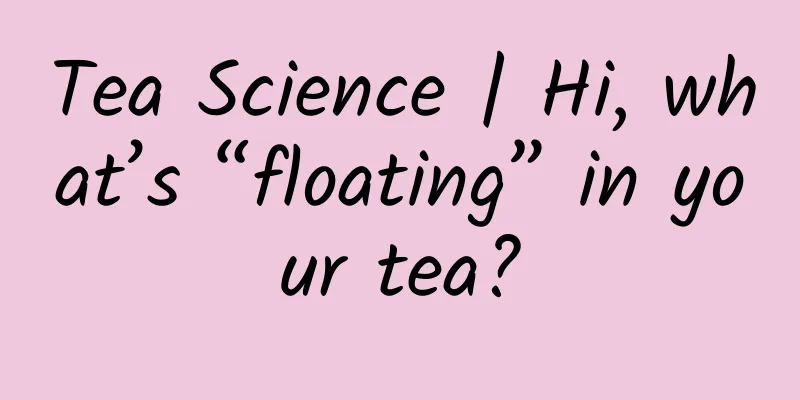The efficacy and function of Physalis

|
As a traditional Chinese medicine, Physalis has great medicinal value and can treat many diseases. Let’s take a closer look at it below. [Other names] 葴, cold juice (Er Ya), vinegar juice (Ben Jing), bitter 葴, bitter 葵, leather-shaped grass (Cui Bao's "Ancient and Modern Notes"), Physalis (Er Ya Guo Pu's notes), lantern grass (Tang Materia Medica), bitter (Jiayou Materia Medica), golden lantern grass (Lü Cangyan Materia Medica), girl's vegetable, lantern (Jiuhuang Materia Medica), red girl (Zhi Yan), sky bubble grass (Compendium of Materia Medica), red lady (Liubian Jilue), coral rack (Wang Lianshi's book on collecting medicine), mountain coral willow, sky lantern grass (Compendium of Materia Medica Supplement), Jiugu Niu (Illustrated Record of Plant Names and Realities), bubble grass, pupuz grass (Fujian Folk Herbs), flower girl (Compilation of Common Folk Herbs), girl flower (Atlas of Medicinal Plants in Wulong, Sichuan), Da Pu grass (Folk Herbs in Southern Fujian), leaf lamp, bell [Source] It is the whole herb of Physalis alkekengi, a plant of the Solanaceae family. Harvested in summer. [Original form] Perennial herb, 35 to 100 cm high. With horizontal rhizomes. The stem is erect, mostly solitary, unbranched, slightly twisted, angular, smooth and hairless. Leaves are alternate, usually 2 leaves grow on one node; petiole is 8-30 mm long; leaf blade is ovate to broadly ovate, 4-10.5 cm long, 2-6.5 cm wide, with acute or acuminate apex, cuneate or broadly cuneate base, with sparse irregular notches or wavy margins, smooth and glabrous above, and almost glabrous beneath. The flowers are solitary in the leaf axils, with pedicels 1 to 1.5 cm long; the flowers are white, 1.5 to 2 cm in diameter; the calyx is green, bell-shaped, about 1 cm long, 5-lobed at the apex, and covered with short hairs on the edges and outside; the corolla is bell-shaped, 5-lobed, with broadly ovate lobes and acute apex. The margin is glandular-hairy; there are 5 stamens inserted at the base of the corolla; the anthers are oblong and inserted at the base; the filaments are filiform; the ovary is superior, ovate, 2-chambered, the style is linear, and the stigma is small and inconspicuous. The berry is spherical, about 1.2 cm in diameter; smooth and hairless, orange-red when ripe: the persistent calyx enlarges when fruiting, becomes thick and membranous and swells like a lantern, up to 4.5 cm long, with 5 edges, orange-red or dark red, hairless, and loosely surrounds the outside of the berry. Seeds numerous and small. Flowering period is from July to October. Fruiting period is from August to November. [Habitat distribution] It grows on roadsides and in grass in fields; some are also cultivated as ornamental plants. It is distributed in most parts of the country. 【Chemical composition】 Contains physalisin A. Physalisin B, Physalisin C, luteolin and luteolin-7-β-D-glucoside. 【Pharmacological action】 ① Antibacterial effect 【Nature and flavor】 Sour, bitter, cold. 【Meridian】 ① "Depei Materia Medica": "enters the qi of the hand taiyin meridian." 【Functions and indications】 Clears away heat, detoxifies and acts as a diuretic. Treat hot cough, sore throat, jaundice, dysentery, edema, furuncle, and erysipelas. [Usage and Dosage] For oral use: decoct in water, 3 to 5 qian; mash into juice or grind into powder. For external use: decoct in water for washing, grind into powder for application or mash for application. 【Note】 ① "Modern Practical Chinese Medicine": "It has the disadvantage of causing abortion." [Additional prescription] ① Treating heat cough and sore throat: Grind up Chinese lantern grass into powder, drink with white soup, and mix with vinegar to apply on the outside of the throat. (Qingxin Pills from Danxi Zongyao) 【Discussions by various scholars】 ① Zhu Zhenheng: "Lantern grass, bitter can remove dampness and heat, light can treat the upper part of the body, so it is used to treat hot cough and sore throat. This grass treats hot phlegm cough, and Buddha ear grass treats cold phlegm cough. It is more effective when used together with Pianqin Qingjin Pills." [Clinical Application] Treatment of upper respiratory tract inflammation in children: Use 100% of the injection solution for intramuscular injection, twice a day, 2 ml each time for children under 5 years old and 4 ml each time for children over 5 years old. A total of 120 cases were clinically observed, and all children had fever to varying degrees. More than 80% of the cases had symptoms of sore throat and varying degrees of tonsil enlargement with purulent exudate. The treatment results showed that 93 cases (77.5%) were markedly effective (body temperature returned to normal within two days, and clinical symptoms and purulent exudate in the pharynx disappeared), 20 cases (16.7%) were effective (body temperature returned to normal within 3-5 days, and clinical symptoms and purulent exudate in the pharynx disappeared), and 7 cases (5.8%) were ineffective (body temperature and purulent exudate in the pharynx did not improve within 5 days, and there was no obvious change in symptoms). According to individual statistics, the body temperature of more than 80% of patients can return to normal within 2 days, and the tonsil secretions and sore throat symptoms of more than 90% of cases disappear within 3 days. However, only 8 cases of tonsil enlargement showed a slight reduction after 4 days of treatment, and the rest showed no obvious changes. In addition, there are reports of using 2 to 3 sepals of Lantern Festival or 3 to 5 coins of the whole herb, decocted and taken once or made into tea, to treat 32 cases of acute tonsillitis. The results showed that except for 2 cases who took the medicine twice, all others were cured in one time. The shortest healing time is half a day and the longest is 3 days. 【Excerpt】 《*Dictionary》 [Source] From "Shennong's Herbal Classic"; 1. "Bielu": Physalis grows in the rivers and lakes of Jing, Chu and people's fields. Harvest in May and dry in the shade. The above describes some ways to eat Physalis. Although many medicinal herbs can be eaten, we must remind everyone that Chinese medicines generally cannot be taken indiscriminately and should be used according to your own situation. |
<<: The efficacy and function of Suanbuliu
>>: The efficacy and function of Cardamine
Recommend
The efficacy of eating Panax notoginseng and hawthorn together
The effect of eating Panax notoginseng and hawtho...
The efficacy and function of Dendrobium officinale
Dendrobium officinale is a traditional Chinese me...
How many types of Astragalus are there?
The traditional Chinese medicine Astragalus is a ...
Today is Lantern Festival丨Light up the lanterns, the moon is full and people are together
Good night to all families Decorate with lanterns...
Who is healthier, people who have nocturia or those who don’t? How many times is normal to urinate at night? The answer is…
When I was young, I could sleep till dawn. But I ...
The pictures and functions of the ground ring
The natural ground ring is a very vigorous green ...
eMarketer: The impact of mobile phones on users' shopping paths
The proportion of users using smartphones and tab...
Is oleander poisonous?
Is oleander poisonous? This is still a very popul...
The efficacy and function of Chinese medicinal material Poria cocos
Poria cocos is not the Poria cocos cake we often ...
The Origin of "Refrigerator", Straw Cup... How did the Ancients Beat the Summer Heat from the Cultural Relics
The hot summer is unbearable, and it is the hotte...
Why does the brain delete memories before the age of 3? What did you see when you were a child?
One minute with the doctor, the postures are cons...
Why do humans want to explore the moon?
The moon is the closest natural celestial body to...
The efficacy and function of fresh ginseng
In daily life, ginseng is very familiar to many p...
What diseases can peach leaves cure?
Spring is the season when peach blossoms are in f...
The efficacy and function of red azalea
Rhododendron rubra is one of the common tradition...









